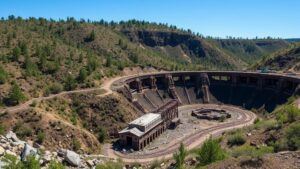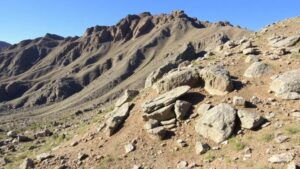Identifying Contact Metamorphic Zones for High-Grade Ore Deposits
Identifying Contact Metamorphic Zones for High-Grade Ore Deposits
Contact metamorphism is a geological process that occurs when country rock is subjected to intense heat and pressure due to the intrusion of molten magma. This process can significantly alter the mineralogical composition of the surrounding rock, creating zones where high-grade ore deposits are often located. Understanding how to identify these contact metamorphic zones is crucial for geologists and mining engineers seeking economically viable mineral resources.
The Mechanisms of Contact Metamorphism
Contact metamorphism typically occurs near igneous intrusions, where the heat from the magma alters the adjacent rocks, known as the country rock. This alteration can lead to increased mineral grades and the formation of valuable ore deposits. Key factors influencing contact metamorphism include:
- Temperature: The temperature gradient between the magma and the surrounding rock is critical. Temperature increases can range from 200°C to over 1000°C.
- Pressure: While pressure increases during contact metamorphism, the confined pressure is minimal compared to regional metamorphism, leading to distinct mineral assemblages.
- Composition of the Magma: The chemical composition of the molten rock influences the type of minerals that can form during metamorphism.
Identification of Contact Metamorphic Zones
Identifying contact metamorphic zones involves a combination of geological fieldwork and petrological analysis. Here are key methods used in the identification process:
- Field Mapping: Geologists conduct extensive field mapping to identify relationships between igneous intrusions and the surrounding country rock. look for signs of alteration, such as the presence of specific metamorphic rocks like hornfels.
- Geophysical Surveys: Techniques such as magnetic and electromagnetic surveys help in identifying changes in subsurface geology that may indicate the presence of high-grade metamorphic zones.
- Geochemical Analysis: Sampling and analyzing the mineral content of rocks can reveal the presence of valuable metals, such as copper, gold, and silver often associated with contact metamorphism.
Case Studies of High-Grade Ore Deposits
Several notable ore deposits can be attributed to contact metamorphism, providing concrete examples of how these processes can lead to economic mineralization:
- The Mesaba Copper-Nickel Project, Minnesota: This project demonstrates how the contact metamorphism of sedimentary rocks, influenced by underlying igneous activity, led to significant copper and nickel deposits.
- The Mount Isa Mine, Australia: Here, the contact between granite intrusions and sedimentary rocks resulted in large deposits of lead, zinc, and silver, highlighting the economic importance of understanding metamorphic processes.
Challenges in Identifying High-Grade Ore Deposits
Despite advancements in exploration technology, identifying high-grade ore deposits within contact metamorphic zones poses several challenges:
- Accessing Remote Locations: Many contact metamorphic zones are located in areas that are difficult to access, increasing the cost and complexity of exploration.
- Differentiating Metamorphic Signals: The overlapping characteristics of different metamorphic processes can complicate the identification of contact zones.
- Environmental Concerns: Increased awareness of environmental impacts poses challenges for mining operations, requiring sustainable practices.
Conclusion
Identifying contact metamorphic zones is essential for the discovery of high-grade ore deposits. Through methods such as field mapping, geophysical surveys, and geochemical analysis, geologists can uncover valuable resources formed through these geological processes. Notable case studies demonstrate the economic significance of these zones, albeit with challenges that need to be addressed. integration of advanced exploration techniques and environmental considerations will be vital in unlocking the potential of these geological formations in sustainable ways.
Actionable Takeaways
- Incorporate advanced geophysical and geochemical methods into exploration efforts to identify high-grade metamorphic zones effectively.
- Monitor environmental compliance and engage with community stakeholders during exploration and mining activities.
- Invest in research and technology to improve the understanding of contact metamorphism and its economic implications.



